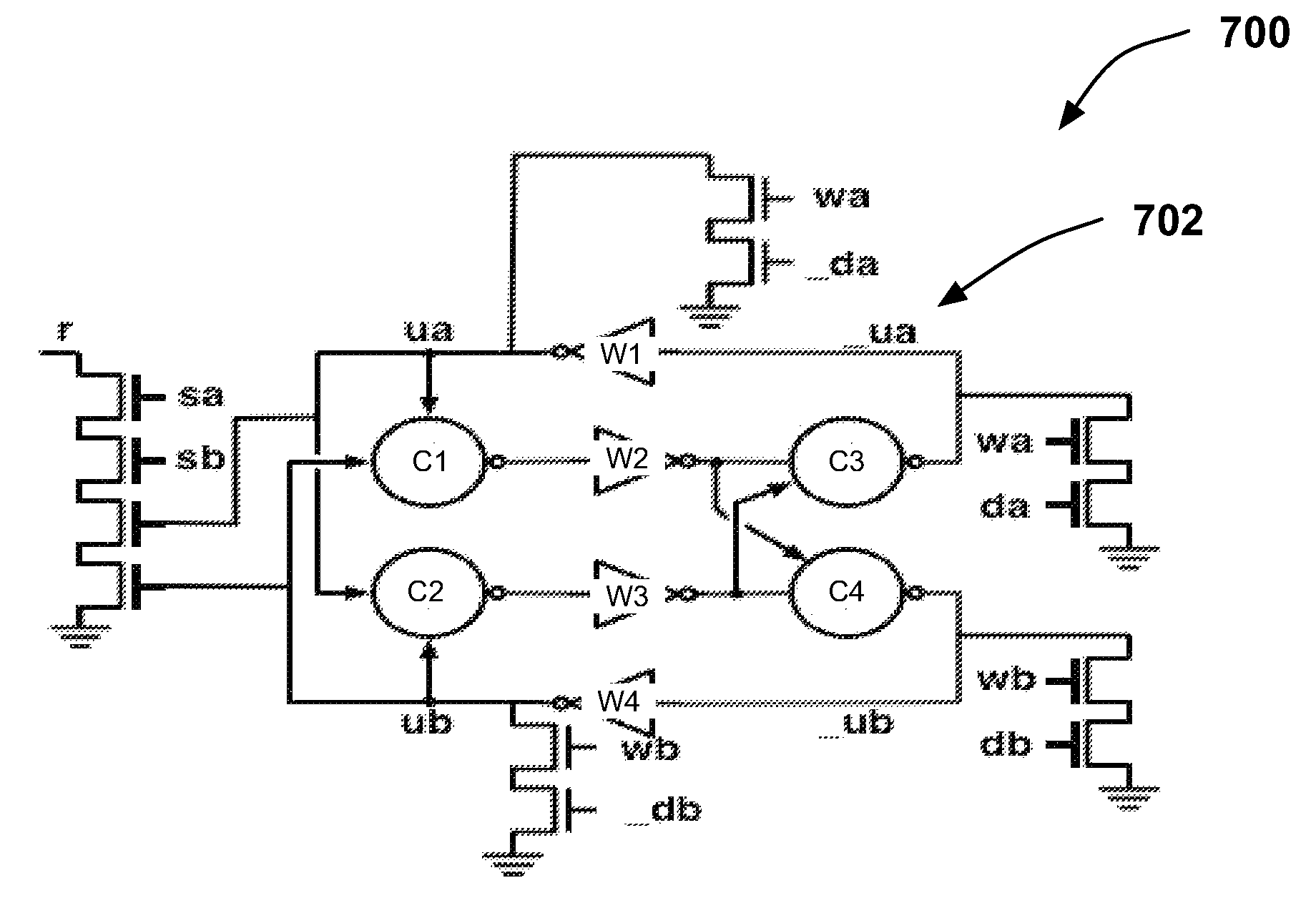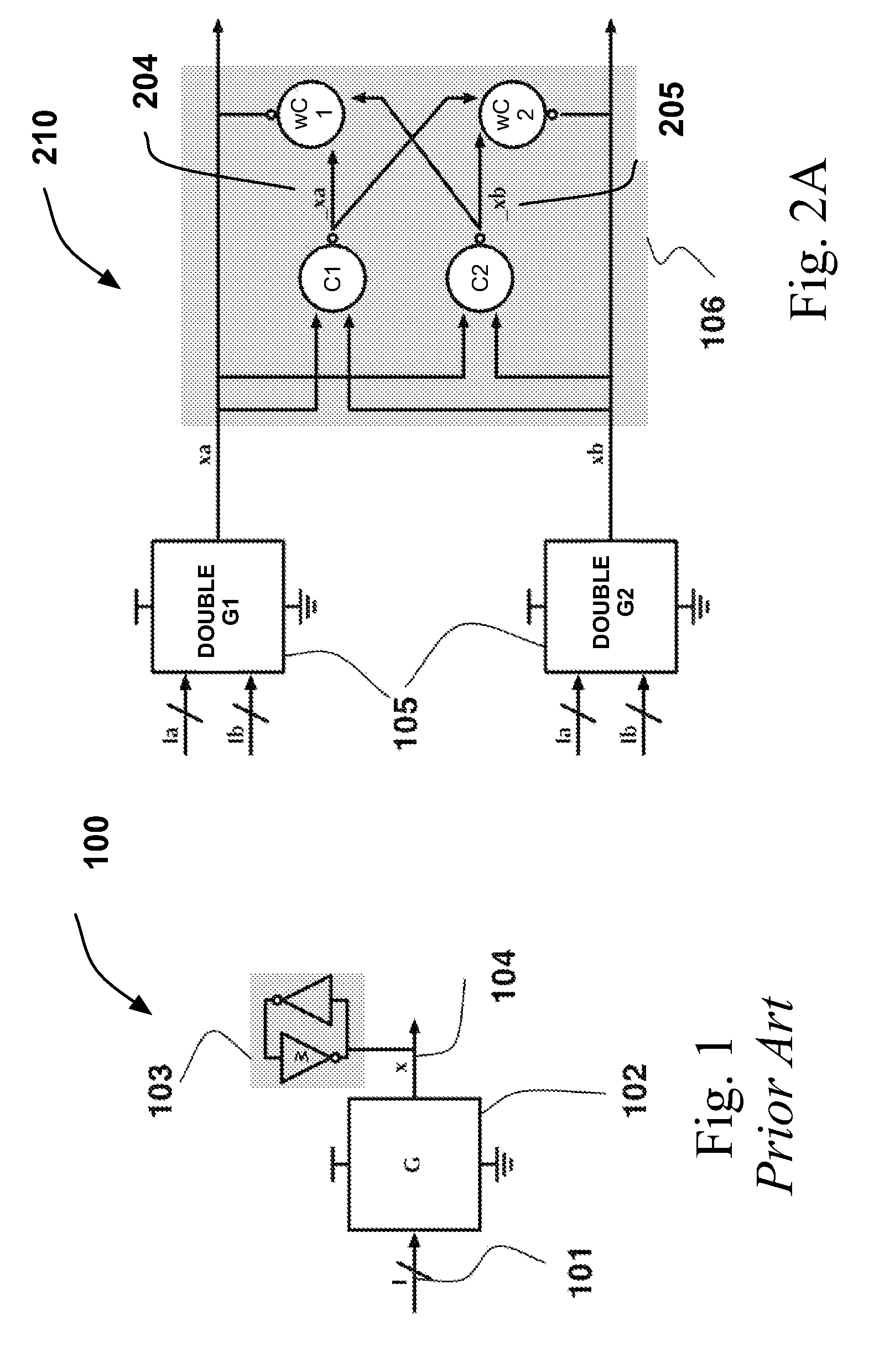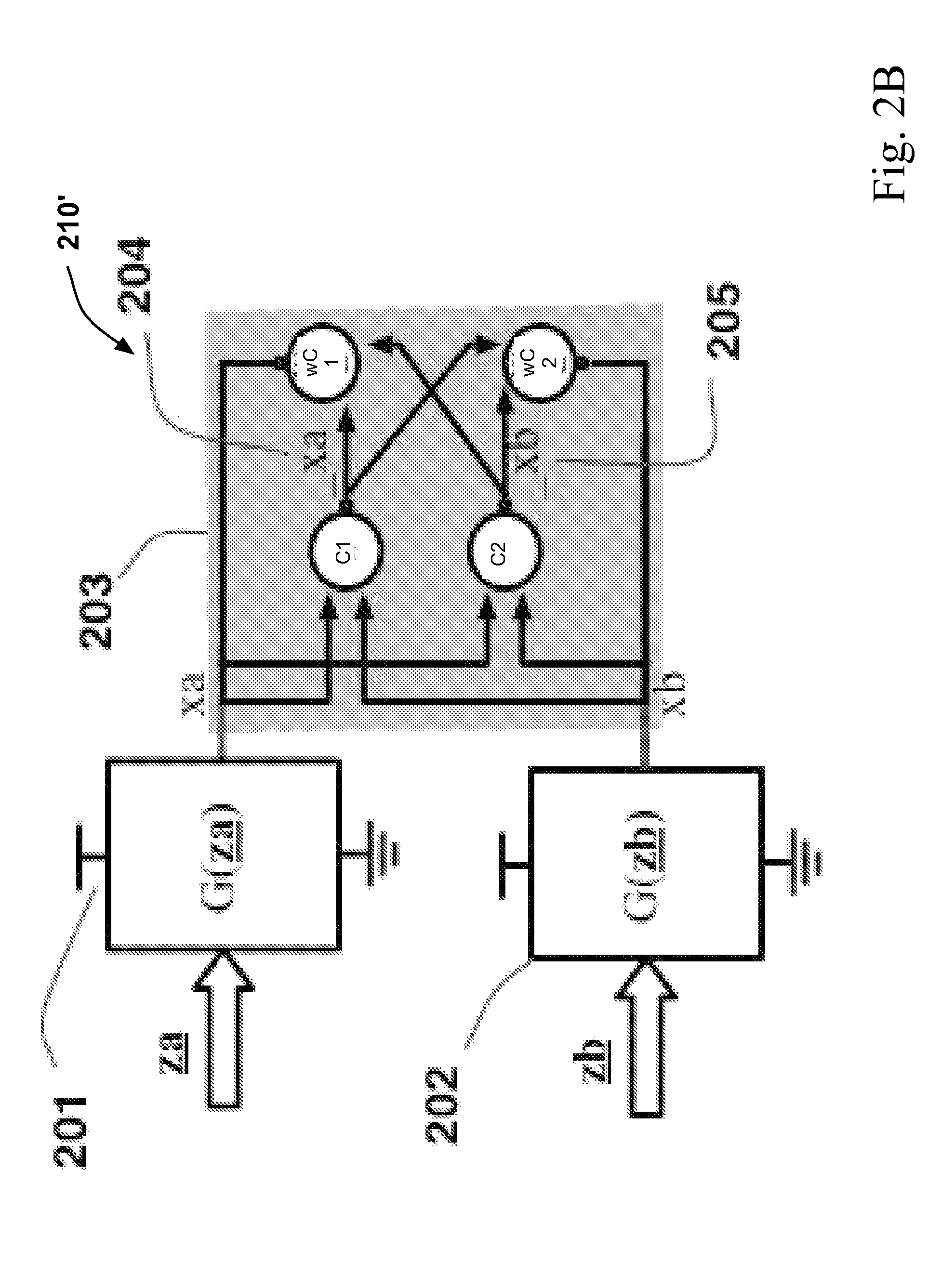Fault tolerant asynchronous circuits
a technology of fault tolerance and asynchronous circuits, applied in the direction of digital storage, instruments, and increasing the degree of modification, can solve the problems of not being able to filter “glitches” or data hazards, asynchronous circuits and in particular asynchronous control circuits do not function correctly, and create functionality problems
- Summary
- Abstract
- Description
- Claims
- Application Information
AI Technical Summary
Benefits of technology
Problems solved by technology
Method used
Image
Examples
Embodiment Construction
[0029]The invention is directed to circuit design techniques, and the associated methods and circuits, for making asynchronous circuits tolerate transient faults that can be introduced due to a variety of effects, including radiation effects such as single-event upsets (SEUs) or more broadly single-event effects (SEEs).
[0030]In a manner well known in the art, a SEE results from a single, energetic particle. An SEU is a radiation-induced error in a microelectronic circuit caused when charged particles lose energy by ionizing the medium through which they pass, leaving behind a wake of electron-hole pairs. An undetected and hence uncorrected SEU can result in a microelectronic circuit generating an incorrect signal value.
[0031]As used herein, examples and illustrations are exemplary and not limiting.
[0032]While certain logic chips may include both clocked synchronous circuits and un-clocked asynchronous circuits on the same chip, the asynchronous circuits do not use a clock signal for...
PUM
 Login to View More
Login to View More Abstract
Description
Claims
Application Information
 Login to View More
Login to View More - R&D
- Intellectual Property
- Life Sciences
- Materials
- Tech Scout
- Unparalleled Data Quality
- Higher Quality Content
- 60% Fewer Hallucinations
Browse by: Latest US Patents, China's latest patents, Technical Efficacy Thesaurus, Application Domain, Technology Topic, Popular Technical Reports.
© 2025 PatSnap. All rights reserved.Legal|Privacy policy|Modern Slavery Act Transparency Statement|Sitemap|About US| Contact US: help@patsnap.com



